Nitecore Intellicharger i8


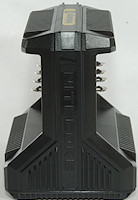
This is a simple to use 8 slot charger with usb charging outputs.
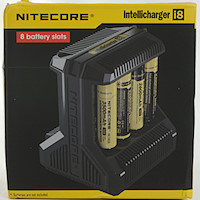
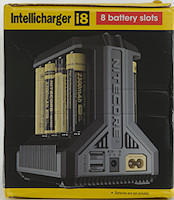
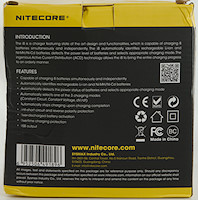
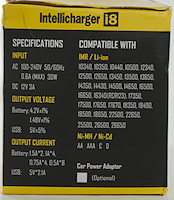
The cardboard box lists lot of specifications, battery types and features.

The box contains the charger, a mains cable, manual and a warranty card.

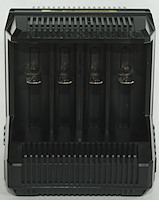
Front and back looks the same on the charger.


All the connections are on one side.
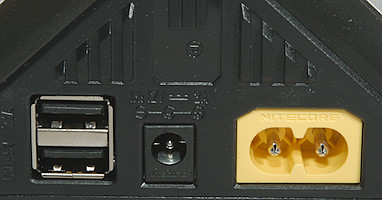
The charger has two power connectors, one for mains input (100-250VAC 50/60Hz) and one for 12 VDC input. There is also a dual usb output.

The user interface is one led for each slot, it is red while charging, flashing red on error and green when done.
They cannot be seen from all angles or in bright light.
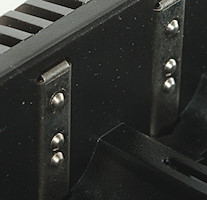
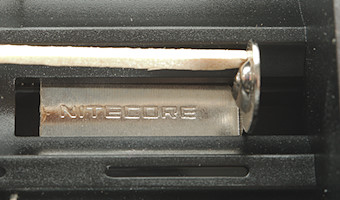
The slots uses the usual construction except for orientation and works well. The springs are strong enough that batteries may fly.
They can handle batteries from 28mm to 70mm long.
This means 21700 is a very tight fit and some protected 18650/26650/32650 will not fit.


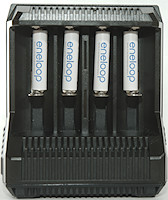
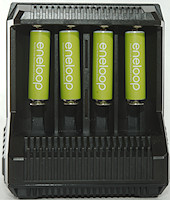
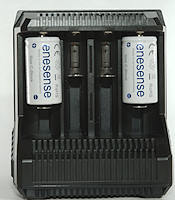
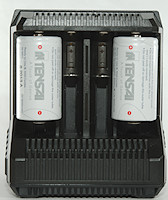
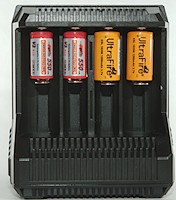
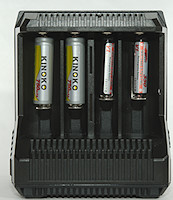
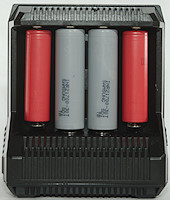
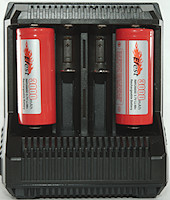
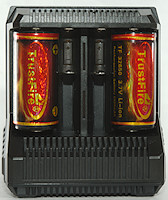
The charger can just about handle 70 mm long batteries, inclusive flat top cells.
The minimum charge current is on the high side for 10440 batteries.
Measurements
- Power consumption when idle is 0.85 watt
- Will charge a LiIon with 0.2mA when charging is finished.
- Will discharge a NiMH with 0.1mA when not powered
- Will discharge a LiIon with 1.4mA when not powered
- Change between long/short cell at around 56mm
- Below 0.75V the charger will report error (leds flashing) and charge with about 0.5mA.
- Above 0.75V regular charging is used.
- Will assume LiIon above 2.0V
- Slots on opposite sides will time share.
- The charger makes small clicking noises when switching power on/off to the batteries.
- Charger will not restart if battery voltage drops.
- Power cycling and insertion of a battery will restart charging.
LiIon charging

The charge curve is a CC/CV with termination current around 150mA, if the voltage had been correct it would be fine, but this slot charges to 4.28V, maximum allowed is 4.25V.
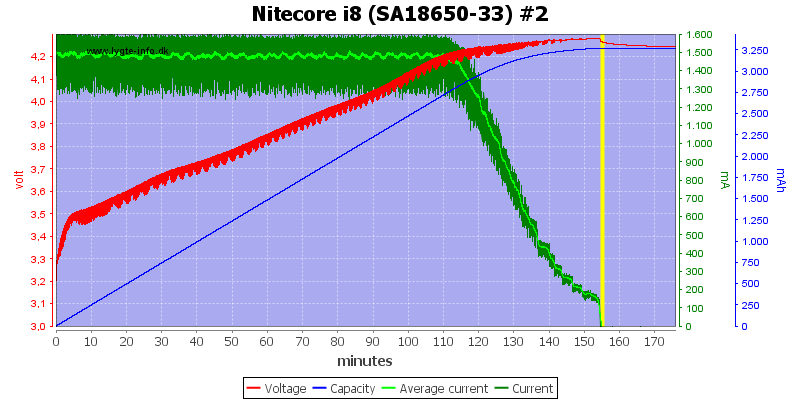
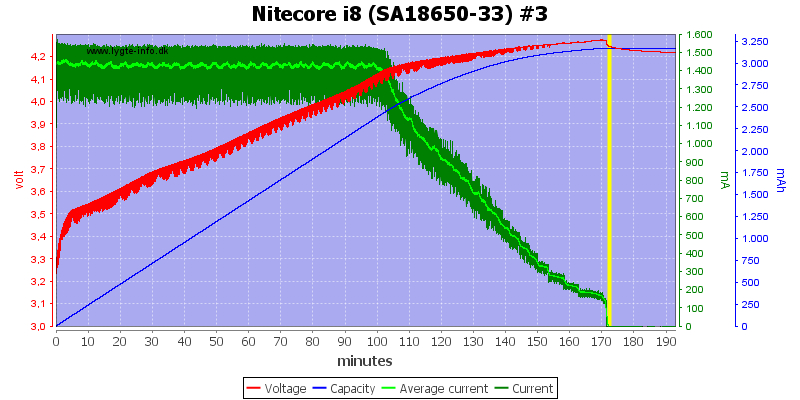
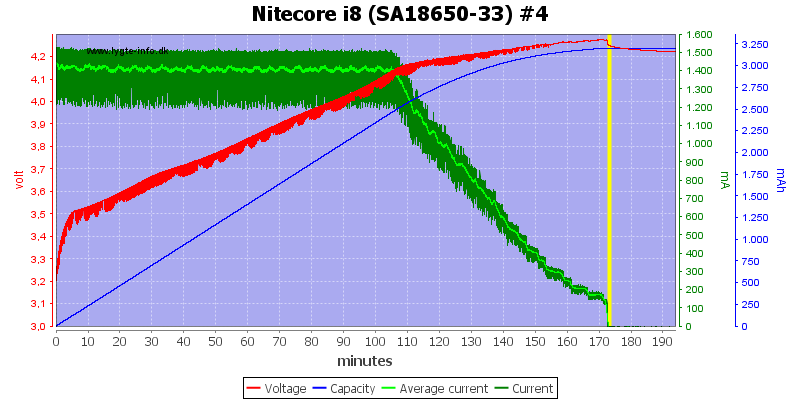
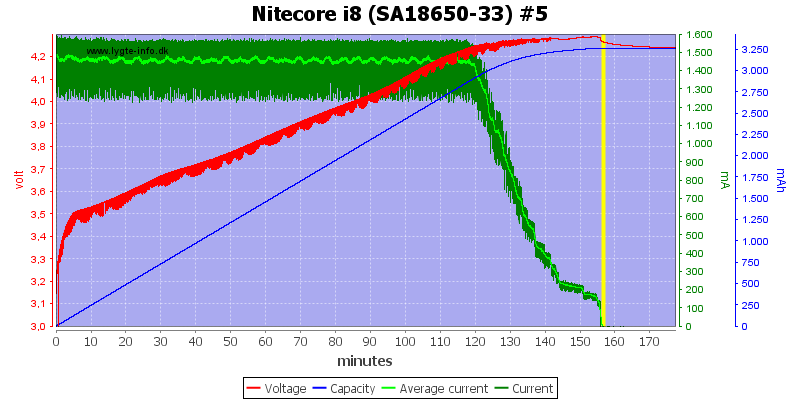
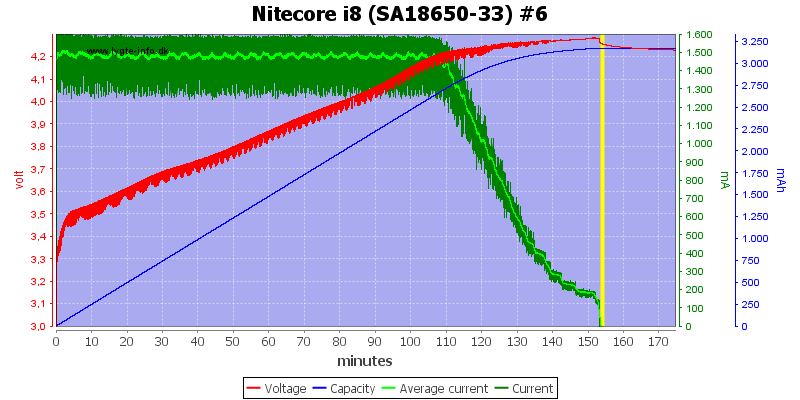
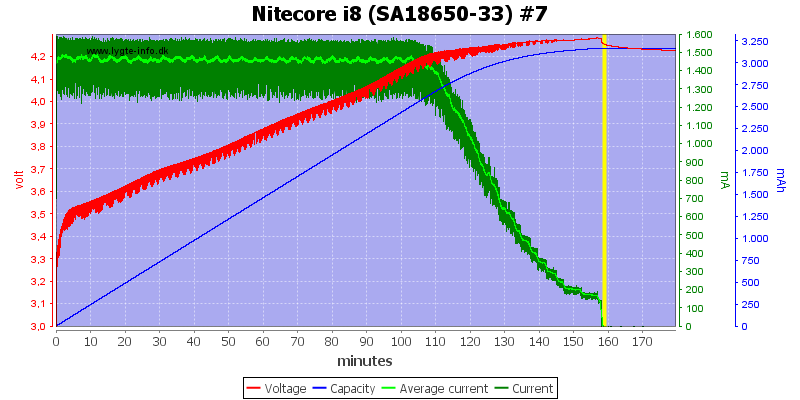
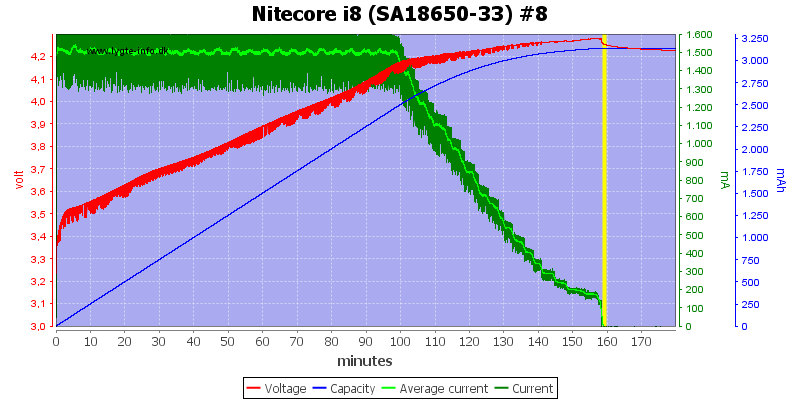
All the other slots also chargers above 4.25V
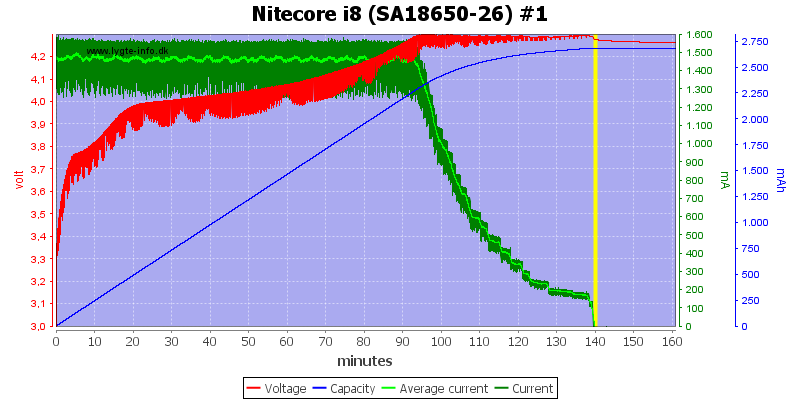
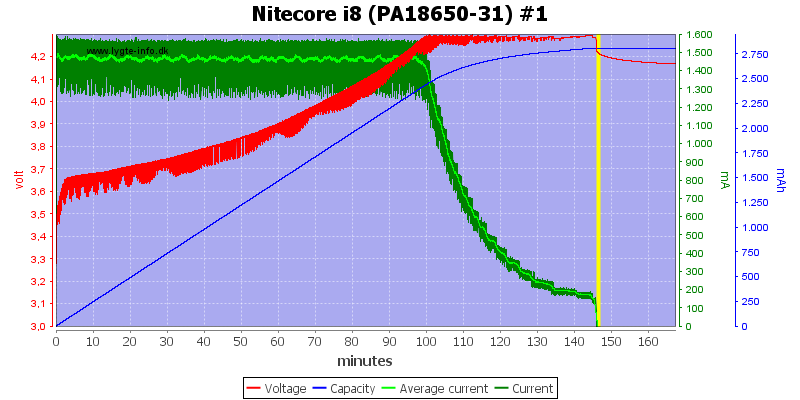
These cells is charged very close to 4.30V.
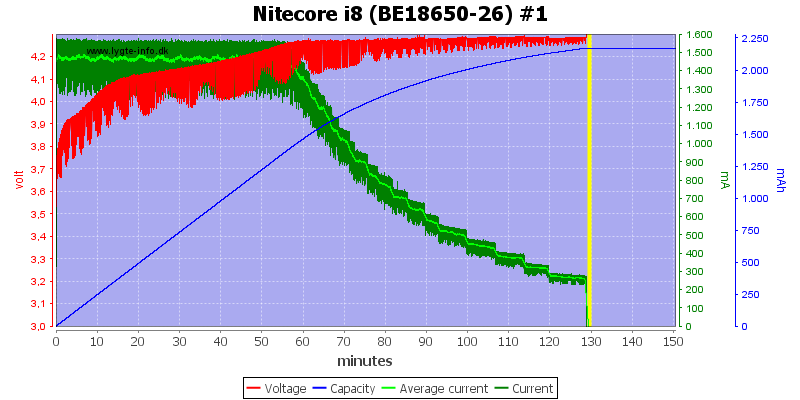
This old protected cell would not accept it and the overcharge protection tripped.
The red line disappears at the same time the current drops to 0 (It went up to 5 volt).
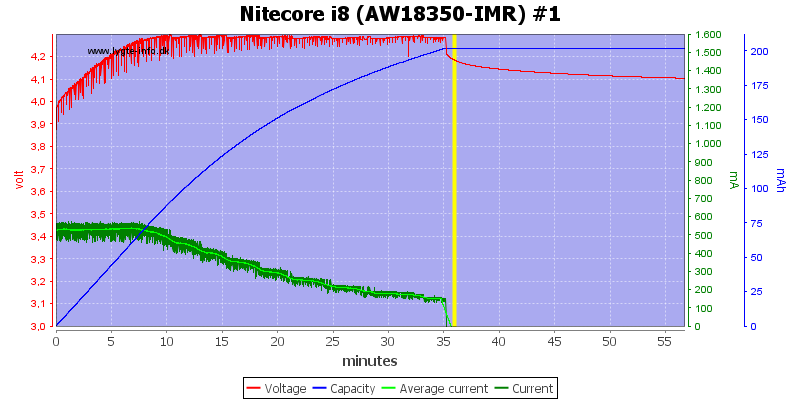
This type of overcharging will stuff some energy into this very old and worn down cell.
Because the cell is shorter the current is reduce to about 0.5A.
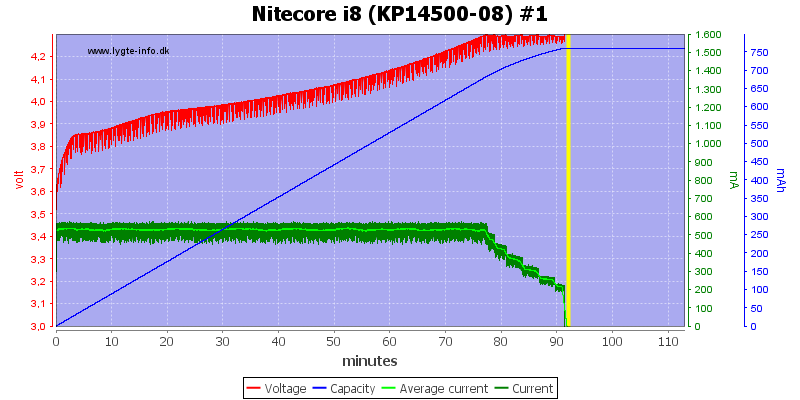
This cell is also charged with 0.5A and this is also a protected cell, where the protection trips.
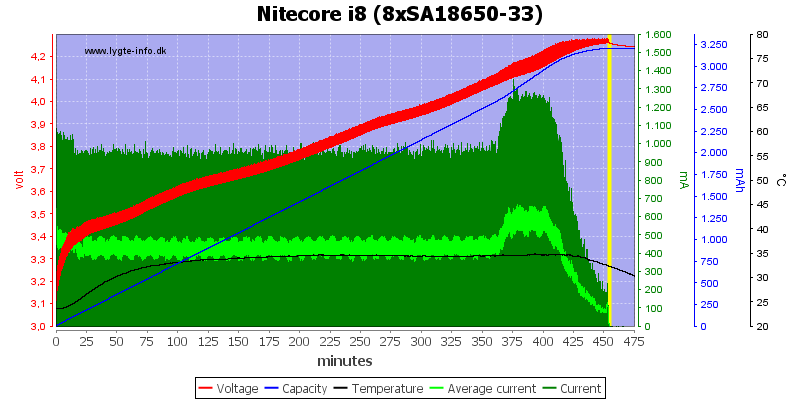
With 8 cells the charge speed is reduced, both due to time sharing and because I am charging 4 cells on one side. At about 375 minutes one (or more) of the cells are finished and the current is increased.
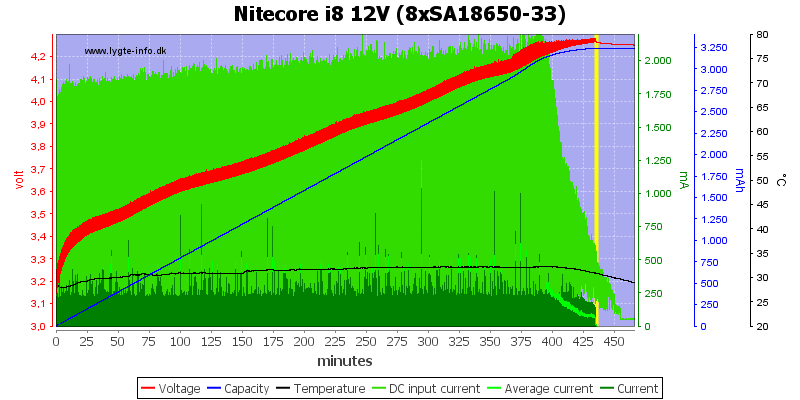
Using a 12V supply the charger needs a bit above 2A when charging 8 batteries.
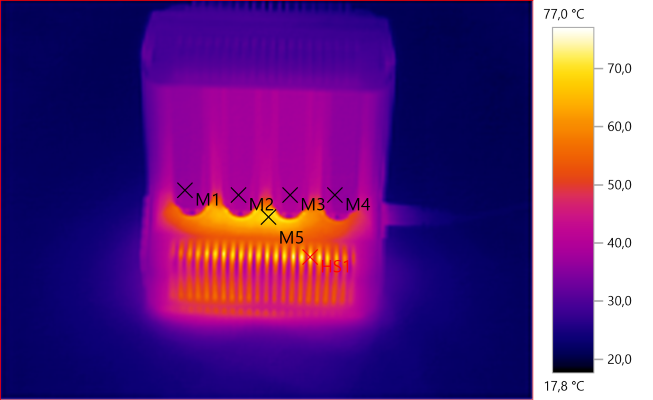
M1: 36,6°C, M2: 38,7°C, M3: 38,8°C, M4: 36,5°C, M5: 69,0°C, HS1: 77,0°C
The heat generating electronic are in the bottom of the charger and it looks like this construction if fairly good at keeping the batteries away from the heat.
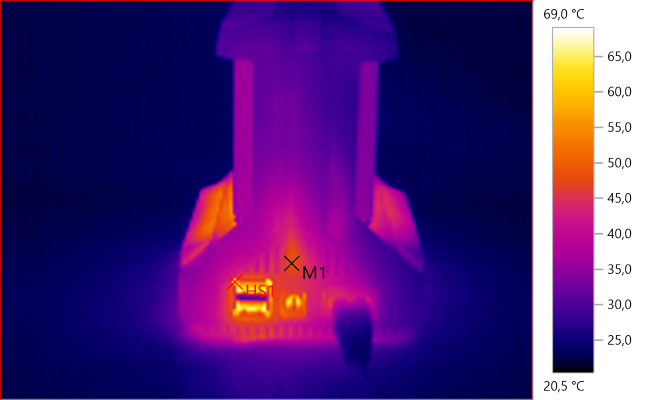
M1: 48,1°C, HS1: 69,0°C
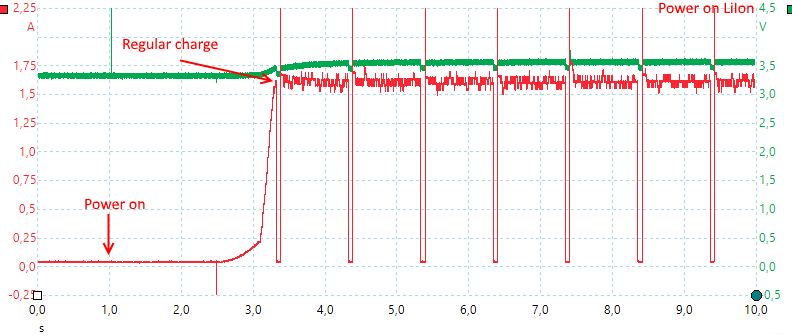
The charger needs about 2 seconds to start.
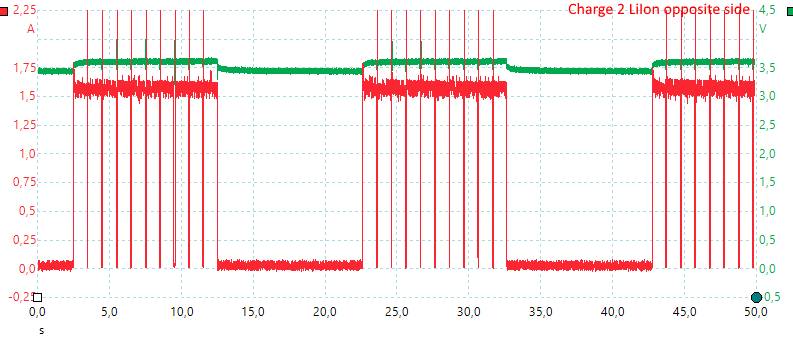
When using both sides of the charger it will time share the charging circuit, this will halve the average charge current. This is for batteries mounted opposite each other.

When charging 4 batteries on a side the current will be slightly reduces (1-3 will use full current). This reduction will be for both sides, i.e. one side with 4 batteries and only one on the other side will both use time share (For two batteries) and reduces charge current for all 5 batteries.
NiMH charging
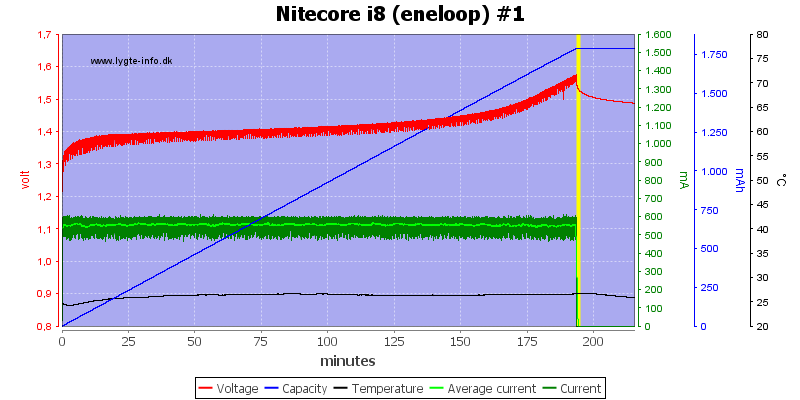
The charger uses the low current setting for NiMH and terminates on voltage. The termination is slightly early, the battery temperature has not started increasing yet. There is no trickle charge.
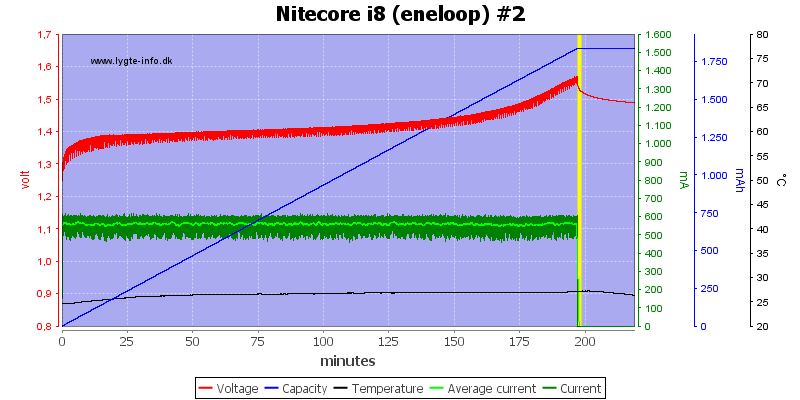
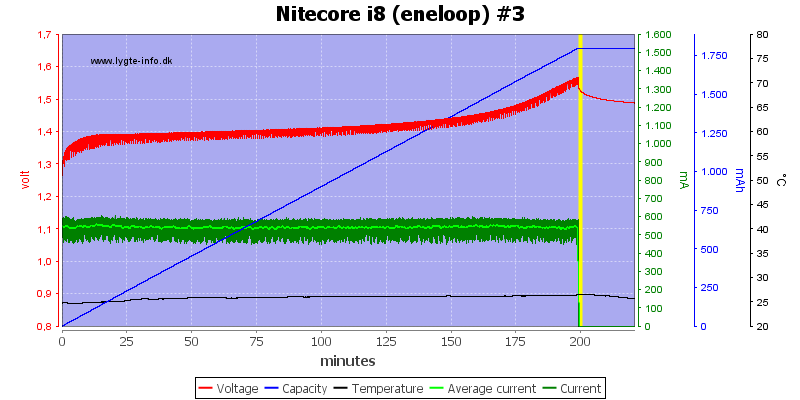
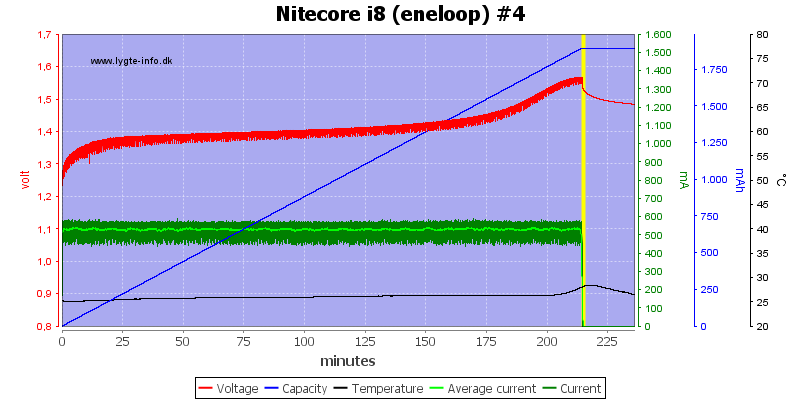
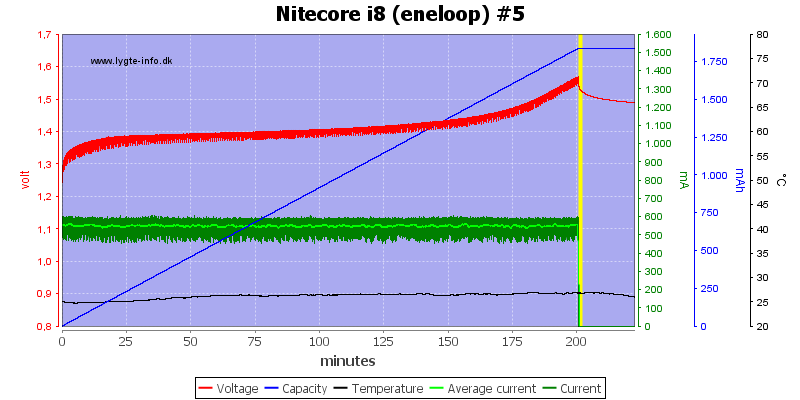
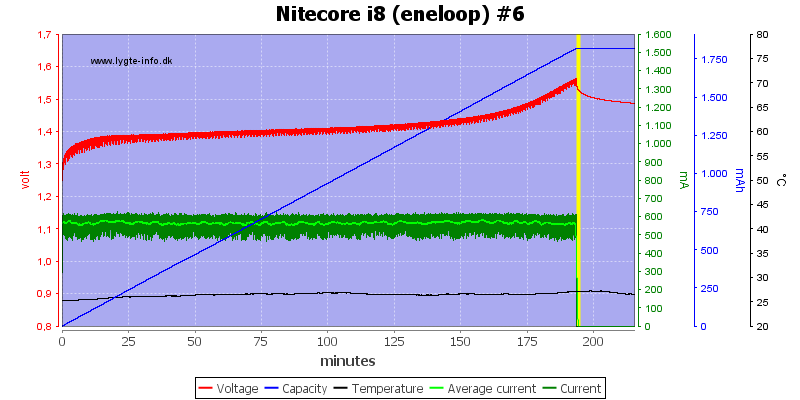
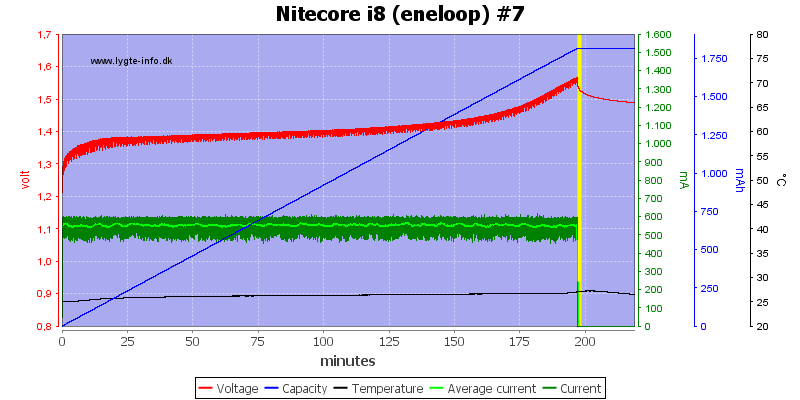
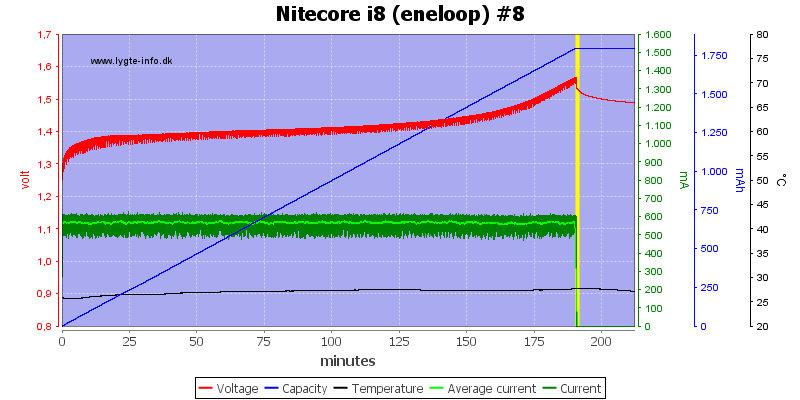
One slot had a temperature raise, the other terminated just before that.
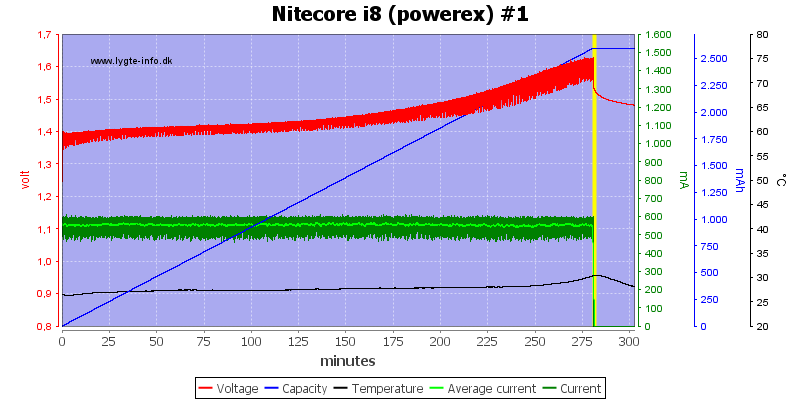
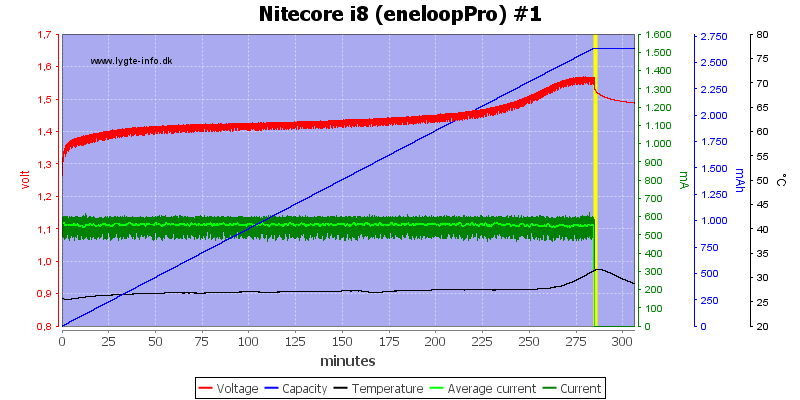
With the two high capacity cells there is a temperature raise, i.e. they are filled.
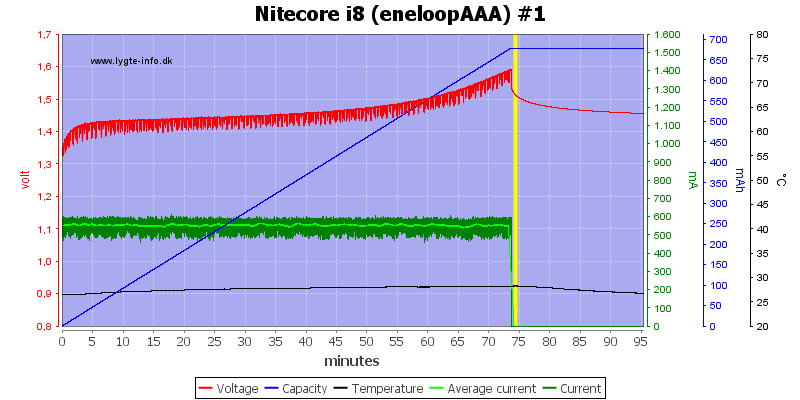
The AAA cell is handled exactly like the AA cells.
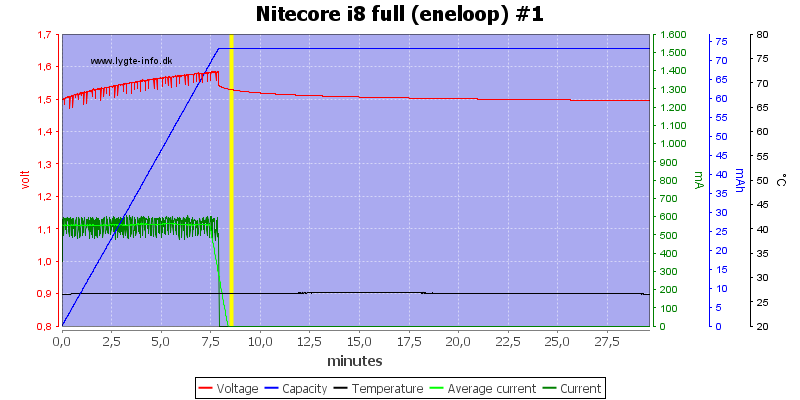
The full cell is detected in about 8 minutes.
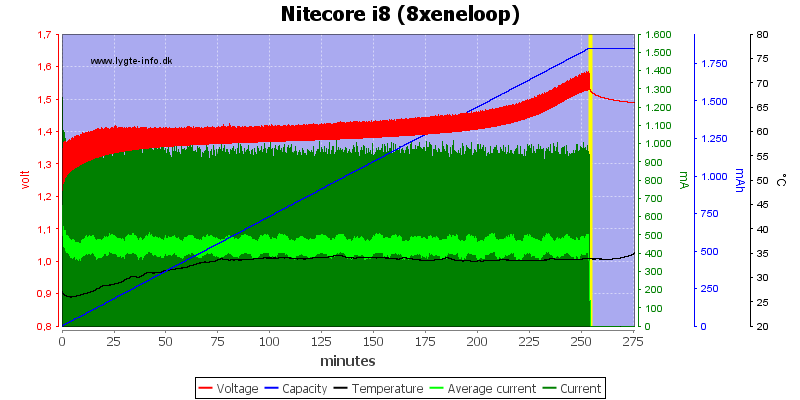
The average charge current is about the same with 8 cells.
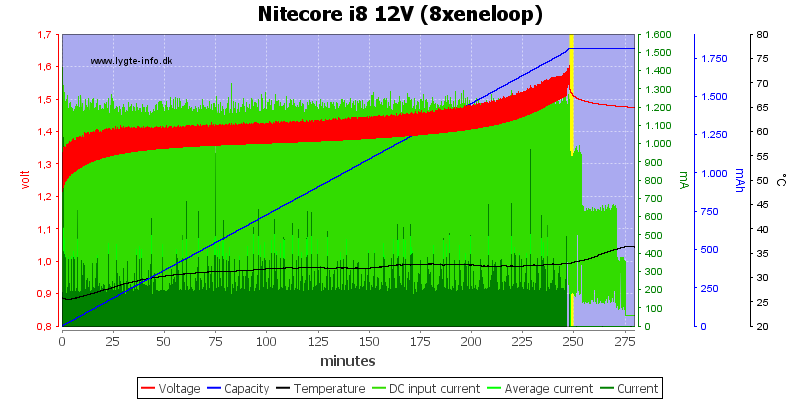
The charger needs abot 1.3A from a 12V supply to charge 8 NiMH.
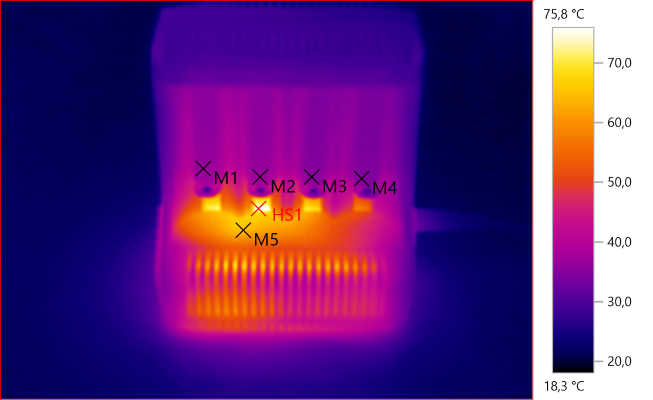
M1: 36,7°C, M2: 36,8°C, M3: 35,2°C, M4: 34,8°C, M5: 64,6°C, HS1: 75,8°C
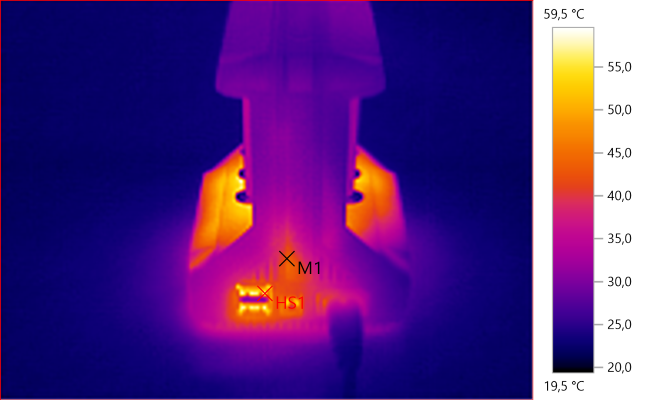
M1: 42,8°C, HS1: 59,5°C
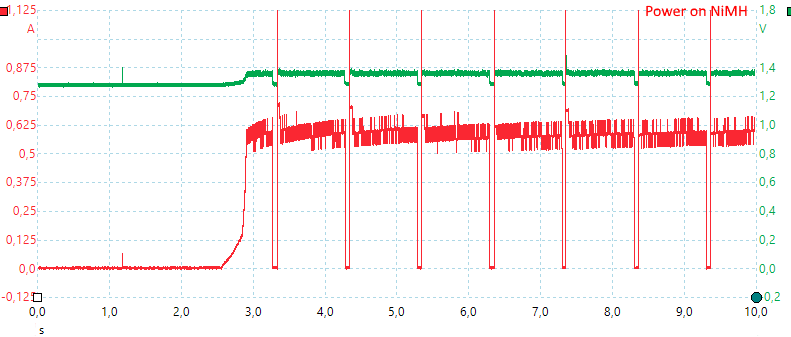
The charger is also fast to start with NiMH batteries.
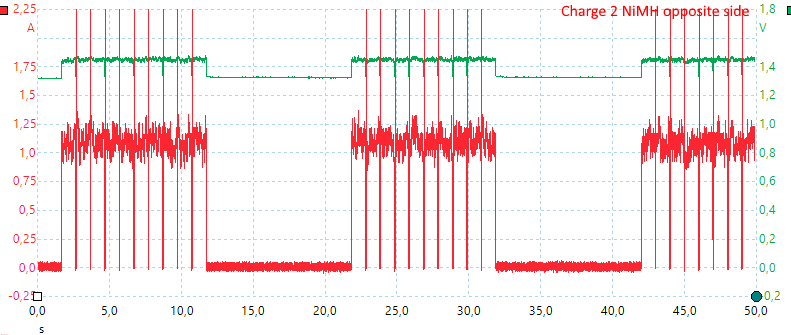
Two batteries on opposite sides will start time sharing, at the same time charging current will be doubled to maintain charging speed.

With NiMH the current is the same independent on the number of batteries.
USB output
- Power consumption when idle is 0.85 watt
- Both usb output coded as usb charger (DCP)
- Usb outputs are in parallel.
- Batteries takes priority over usb, usb will turn off if 3 or 4 slot pairs (either of front/back) are used.
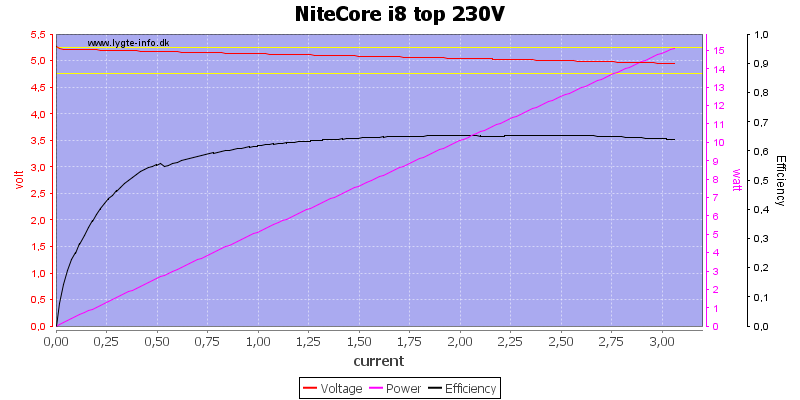
The overload protection kick in at about 3A.
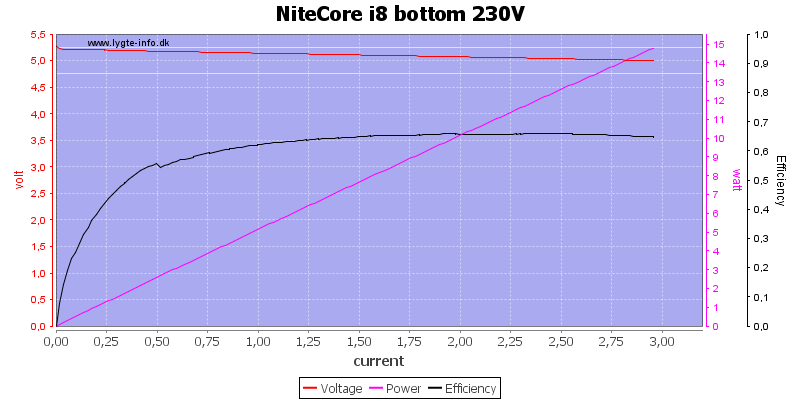
On both outputs.
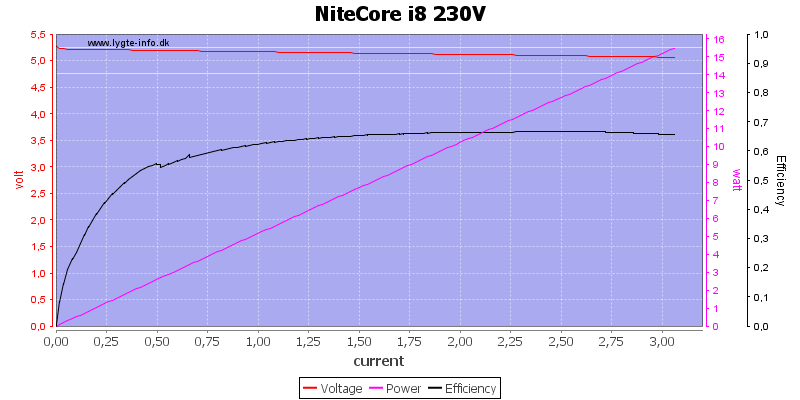
And also when running them in parallel.
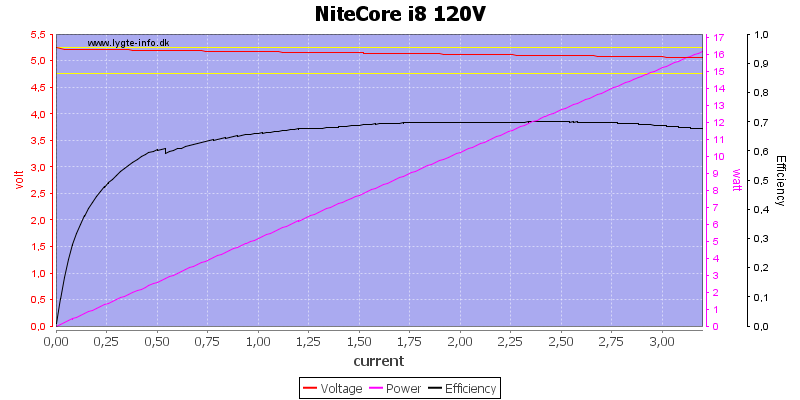
The overload protection is slightly higher at 120VAC input.
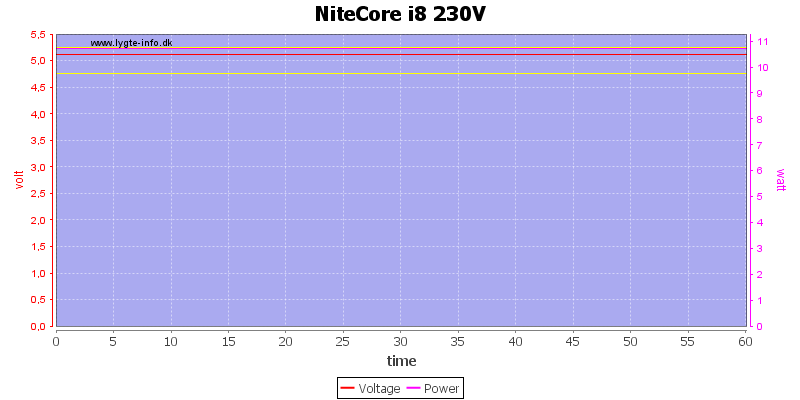
Running the output with a 2.1A load for one hour is no problem.
The temperature photos below are taken between 30 minutes and 60 minutes into the one hour test.
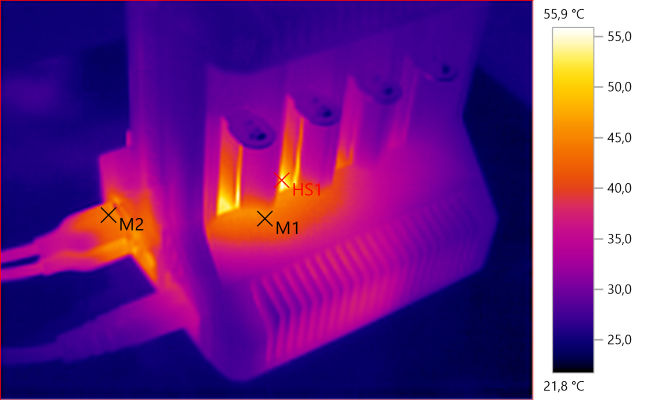
M1: 44,1°C, M2: 43,8°C, HS1: 55,9°C
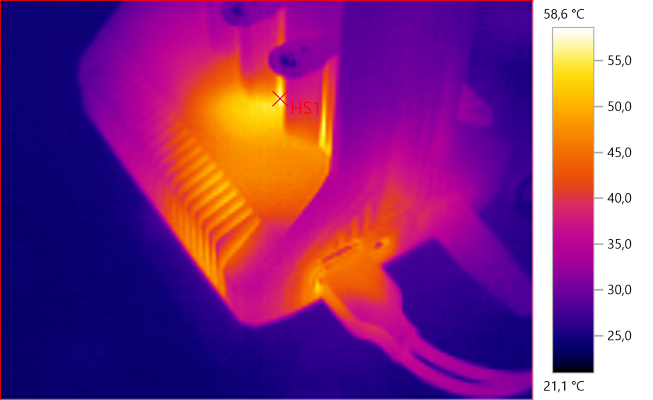
HS1: 58,6°C
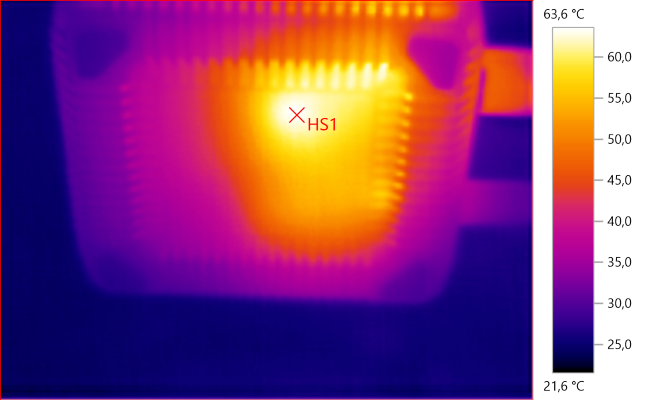
HS1: 63,6°C

Noise is 19mV rms and 124mVpp

Noise is 19mV rms and 257mVpp

Noise is 16mV rms and 99mVpp, all very low values.
Testing with 2830 volt and 4242 volt between mains and low volt side, did not show any safety problems.
Conclusion
With 8 slots is can charge a lot of batteries, but with LiIon it is a bit slow because the charge rate is halved when both sides of the charger is used, with NiMH is is always slow, the current is doubled when both sides are used, i.e. charge time is the same.
The charge voltage for LiIon is rather high at 4.28V (Maximum allowed is 4.25V), this means increased wear on the batteries. It will also trip the overcharge protection on some batteries, this usual reset itself when the battery is removed from the charger.
With NiMH it is better, the charger stops on voltage when the battery is just about full (a top-off charge would have been nice) and there is no trickle charge.
The usb outputs works fine and have a good coding, I just wonder why there are two connectors, the power level is only enough for one charge port.
I will call the charger acceptable.
Notes
Here is an explanation on how I did the above charge curves: How do I test a charger












































































